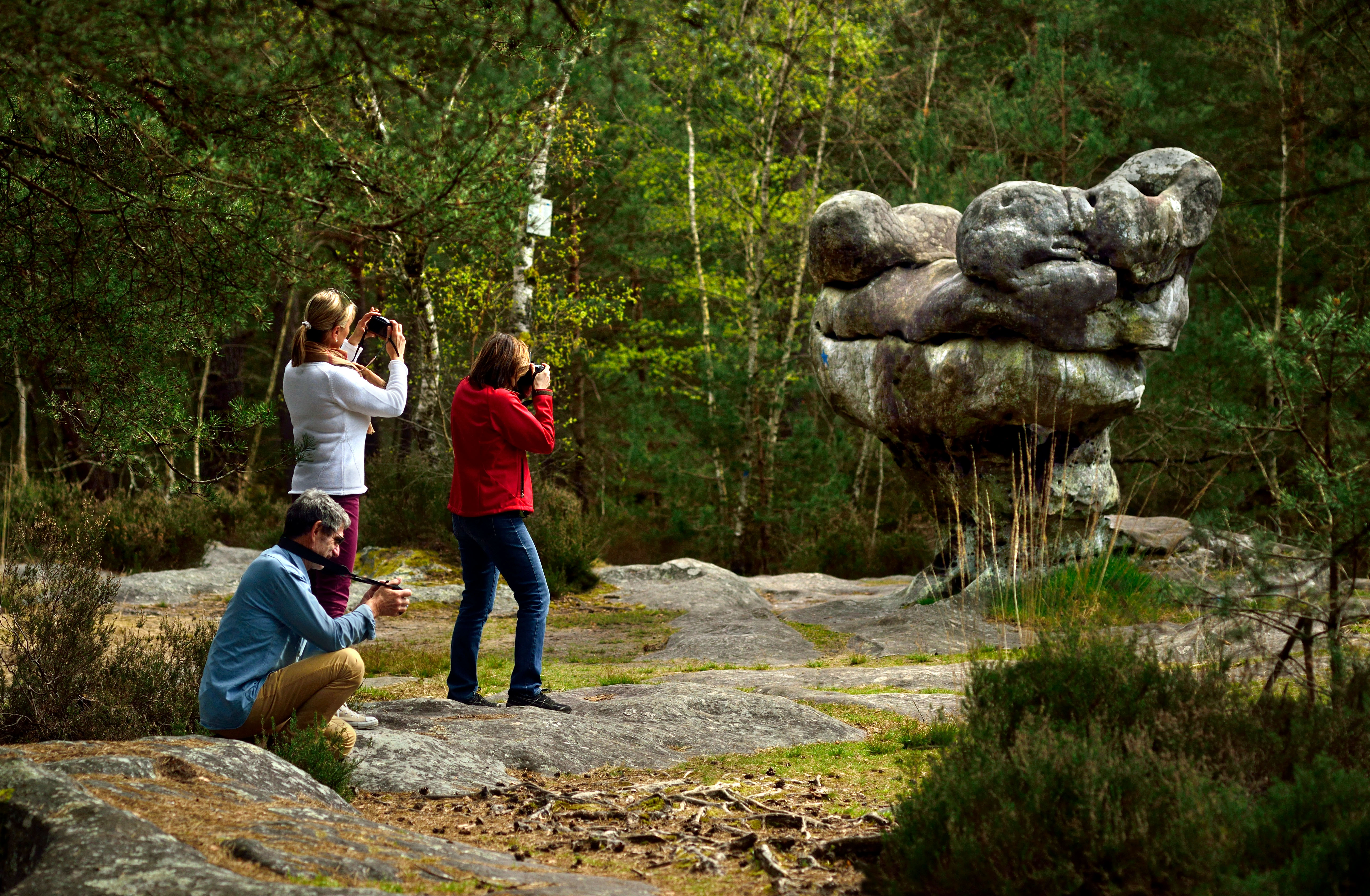Crédits photo
- Melun Val de Seine Toeristenbureau
- Ville de Melun Val de Seine
- Julien Meneret
- Didier Paris
- Collectif Images
- Alticlic
- Pascal Gaël
- Jérome Mignon
- Michel d’Anastasio
- Frederic Miel
- Sophie Loyd
- Thierry Benne

“It's not just a forest I want to see, it's Fontainebleau” Marcel Proust.
Powerful smells from the undergrowth, the inhabited silence of the forest, shimmering colours and landscapes dictated by the seasons - the visitor delights in the multi-faceted personality of the forest of Fontainebleau.
Jumbled sandstone boulders concealing caves with legendary secrets, greenness stretching as far as the eye can see, tinted with golden colours in autumn and bluish with frost on winter mornings - you can almost believe you have joined the immensity of the world!
The forest at the dawn of time...
The forest of Fontainebleau covers 17,000 hectares, extended by the 3,000 hectares of the massif of the Trois Pignons. Paths have been laid and marked out for 300 km. Sandstone has formed on its silty, sandy soil, throwback to the Stampian sea that covered it at the dawn of time: the grains of sand have cemented over millions of years, causing rock falls and creating caves and boulder fields, gradually eroded by rain and wind. A fresh water lake deposited limestone from shell debris on the sand and the sandstone, protecting the forest sand and keeping it white and pure.
Multi-faceted flora and fauna
5,685 species of plant life have been listed: oak, beech, hornbeam, chestnut, locust, birch, maritime and Scots pine and juniper, plus a few curiosities planted by former owners: sequoia, spruce and cedar.
Protected wild animals coexist in the seeming tranquillity of the forest: deer and roe deer, wild boar and foxes, squirrels, rabbits, badgers and even reptiles. Although you are unlikely to encounter any wolves, you may perhaps catch sight of some timid elk by penetrating into the depths of the forest, although they are active mainly at twilight and during the night when their kingdom is returned to them. The forest sings with the chirping of 250 different species of birds, but you need patience and a good musical ear to identify them all!
Dream landscapes!
The forest of Fontainebleau contains a number of outstanding landscapes and sites. Of particular note, perhaps, are the Franchard gorges, the former 12th century hermitage and the viewpoint over the forest and the far-distant plain; the Apremont boulder field and desert, famous for its rock piles; the heights of the Solle, for the panorama at their foot over the racecourse and the magnificent tall beech forest of Gros Fouteau, not forgetting the Croix du Calvaire, dominating the town of Fontainebleau and its château.


© SMT




All year round.

Free access.